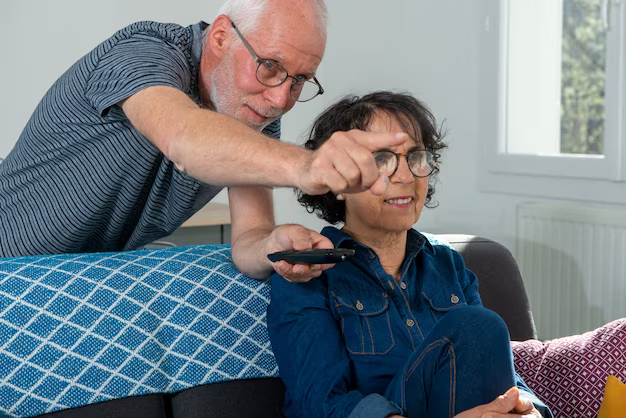How Effective is an MRI in Detecting Dementia? Understanding the Role and Limitations
Have you ever wondered about the mysterious intricacies of the human brain and how modern technology navigates its complex landscape? If so, you’re likely curious about whether magnetic resonance imaging (MRI), one of today’s most advanced imaging tools, can effectively detect dementia. This question matters to families and individuals worldwide as they seek insights into this challenging condition. Let's delve into this topic and explore the possibilities and limitations of using MRI in diagnosing dementia.
🧠 MRI and the Brain: A Brief Overview
Before we investigate the relationship between MRI and dementia, it’s essential to understand how MRI works. MRI technology uses strong magnetic fields and radio waves to create detailed images of the brain. These images allow medical professionals to visualize brain structure without invasive procedures.
How Does MRI Work?
- Magnetic Field: An MRI machine generates a powerful magnetic field, aligning protons in the body’s water molecules.
- Radio Waves: The application of radio waves alters this alignment, resulting in the emission of signals from the atoms.
- Image Creation: Advanced computer processing turns these signals into detailed cross-sectional images of the brain.
These images are incredibly useful for identifying abnormalities, making MRI a prime candidate for exploring brain-related issues, including dementia.
Understanding Dementia: Beyond Forgetfulness
Dementia is a broad term that encompasses a range of symptoms affecting memory, thinking, and social abilities. It's important to note that dementia isn't a specific disease but a cluster of symptoms often accompanying certain conditions.
Common Types of Dementia
- Alzheimer’s Disease: The most common cause, characterized by memory loss and cognitive decline.
- Vascular Dementia: Often follows events like strokes, where brain damage affects blood flow.
- Lewy Body Dementia: Involves protein deposits in brain cells, affecting movement and thought processes.
- Frontotemporal Dementia: Affects personality and language due to degeneration of the brain's frontal and temporal lobes.
Given its complexity, diagnosing dementia requires a comprehensive approach.
Can an MRI Detect Dementia?
MRI is a powerful tool, but its role in detecting dementia is primarily supportive rather than definitive. Here's why:
What an MRI Can Reveal
- Structural Changes: MRI can detect changes in the brain's structure, such as shrinkage in certain regions, which is common in Alzheimer's disease.
- Vascular Damage: It can highlight blood vessel abnormalities and lesions associated with vascular dementia.
- Other Abnormalities: MRI scans might reveal the presence of tumors, which could contribute to dementia-like symptoms.
Limitations of MRI in Dementia Detection
- Lack of Specificity: MRI detects structural changes, but not all individuals with such changes develop dementia.
- Early Diagnosis: In the earliest stages of dementia, MRI might not show significant structural changes.
- Complexity of Symptoms: Dementia symptoms can stem from both structural and functional changes, the latter being undetectable by MRI alone.
🔄 The Role of MRI in a Comprehensive Diagnostic Process
Given its limitations, MRI is typically one part of a broader diagnostic toolkit for dementia. Here’s how it fits into the full process:
Multimodal Assessment
- Clinical Evaluation: Cognitive tests and a thorough neurological examination provide initial insights.
- Blood Tests: Rule out other causes for symptoms such as vitamin deficiencies or thyroid issues.
- MRI and Other Imaging: Used to rule out other conditions, such as tumors, that might cause symptoms.
Why Use MRI at All?
- Baseline Information: Establishing a baseline can help monitor disease progression.
- Exclusion of Other Conditions: By identifying or excluding other brain abnormalities, MRI helps narrow potential causes.
Complementary Tools and Advances in Technology
While MRI provides valuable insights, it works best alongside other diagnostic tools and emerging technologies.
Innovations in Dementia Diagnosis
- PET Scans: These can detect amyloid plaques, indicative of Alzheimer’s before symptoms arise.
- CSF Testing: Examining cerebrospinal fluid can identify biomarkers consistent with Alzheimer’s.
The Future of Imaging and AI
There's promising research in integrating artificial intelligence to enhance imaging analysis, potentially offering earlier and more accurate dementia diagnosis.
Tips for Patients and Families Navigating Dementia Diagnosis
It's crucial for patients and families to approach the diagnostic process equipped with the right questions and expectations.
📝 Key Takeaways and Tips
- Seek a Specialist: Consult a neurologist or geriatrician with expertise in dementia.
- Prepare for Appointments: Note any symptoms, behavior changes, and family history beforehand.
- Understand the Process: Diagnosis is often an ongoing process, not a single verdict.
🤔 Considering an MRI?
- Discuss with Your Doctor: Understand how an MRI fits into your or your loved one's diagnostic picture.
- Focus on Holistic Outcomes: Emphasize comprehensive care and management strategies beyond imaging.
📝 Quick Recap: MRI in Dementia Diagnosis
Here's a succinct summary to help consolidate your understanding of MRI's role:
- MRI: Useful but not definitive for detecting dementia.
- Diagnosis: Involves clinical evaluations, imaging, and possibly advanced tests.
- Comprehensive Approach: Every patient's journey is unique, requiring individualized strategies.
Navigating the path of dementia diagnosis involves more than technology; it’s about understanding brain health and championing compassionate care. As researchers continue to unlock the brain's secrets, MRI remains a crucial yet modest part of our growing toolbox in understanding dementia. Remember, staying informed empowers both patients and caregivers to make thoughtful, informed decisions.

Related Topics
- Are Dementia And Alzheimer's The Same Thing
- Are Dementia Patients Insulin Resistant
- Can a Dog Get Dementia
- Can a Np Diagnose Dementia
- Can a Nursing Facility Diagnose Dementia Patients In California
- Can a Person With Dementia Divorce Their Spouse In California
- Can a Stroke Cause Dementia
- Can Adhd Turn Into Dementia
- Can Alcohol Abuse Cause Dementia
- Can Alcohol Cause Dementia